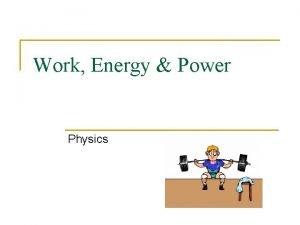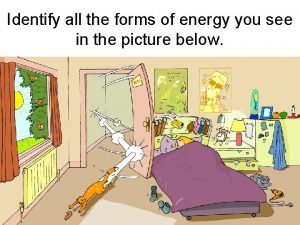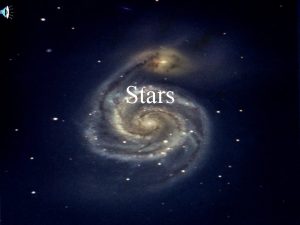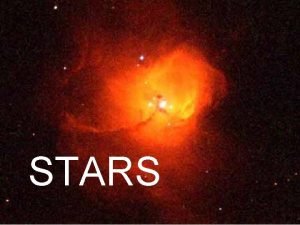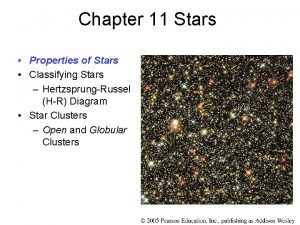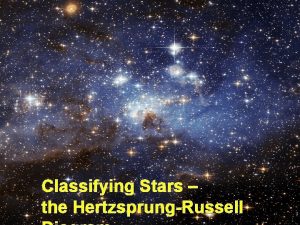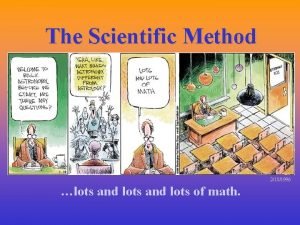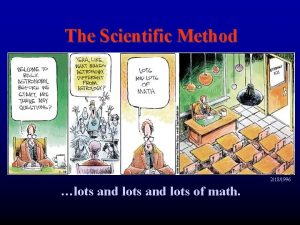There are lots of kinds of stars Protostars



















- Slides: 19

There are lots of kinds of stars Protostars Medium-Sized Stars Red Giant Stars White Dwarfs Massive Stars Supernovas Neutron Stars

Protostars Gravity pulls huge nebulas of hydrogen gas and dust into a single spinning cloud. As the particles crash into each other, the matter heats up…. about 15 million degrees. Fusion begins…. . The mass begins to shine brightly. A star is born!

Medium-Sized Stars Hydrogen fuel is fused into helium at the star’s core until the hydrogen is used up. The core shrinks, heats up, & releases energy. The energy causes the star’s outer layers to expand, cool and become redder.

The star heats, expands, reddens and becomes a ……

Red Giant The helium core continues to heat. At ~ 200 million degrees the helium atoms fuse to form carbon atoms and the last of the hydrogen gases drift away.

These drifting gases form a nebula ring around the star. The star is dying. It grows fainter and fainter. Gravity causes its matter to collapse inward. The star is squeezed into a……

White Dwarf What are they? They are superdense stars with carbon cores. Since all of the mass of a star the size of our sun has been squeezed into the size of the earth, all of the atoms are crowded together.

How long will a star live? Our sun, a medium sized star, will live about 10 billion years. Small stars will live about 100 billion years. Large stars will only live a few billion years. .

Massive Stars ……begin with about 6 times as much mass as our sun. Like medium sized stars: ØThey burn hydrogen at first. ØThey redden as their helium core forms. ØBut, instead of becoming red giants …. they become supergiants.

As their cores heat up, they fuse from helium…. to carbon…. . to oxygen and nitrogen…. to iron. Then the fusion stops.

They expand into supergiants.

What happens next? When the fuel runs out, gravity collapses the core even more. The iron core absorbs energy instead of releasing it…. The star breaks apart in a terrific

A Supernova! The entire sky is lit up for weeks. The temperature can be more than 100 billion degrees. The iron atoms fuse into uranium. The uranium and gases explode into space. A gigantic cloud of gas and dust is left and may become a new nebula.

Neutron Stars After the supernova explosion of a star 6 -30 times the mass of the sun, a neutron star remains. How big is it? It’s only about 16 Km in diameter, but it has so much mass packed into it, a chunk the size of a sugar cube has the mass of ~ 100 MILLION CARS!!!

Stars 30 or more times the mass of our sun live even shorter lives and face a strange fate…… After the supernova explosion, the star’s core is so massive, it is swallowed up by its own gravity.

The core’s gravity is so strong that even light can’t escape. The core has become a…. . Black Hole

Black holes are like invisible cosmic vacuum cleaners. They swallow both matter and energy. How can we find them if we can’t see them? We can’t, for sure. Matter falling into a black hole releases large bursts of X-rays. We can detect these.

Supernova Protostar Nebula Sun Red Giant White Dwarf Black Dwarf (dead star) Medium-Sized Stars

Neutron Star Supernova Protostar s as i H gh M Red Supergiant y er V Nebula h ig H s as M Black Hole Massive Stars
 Mikael ferm
Mikael ferm There are millions of stars in the space
There are millions of stars in the space There is lots of milk
There is lots of milk Two kinds of letter
Two kinds of letter There are many kinds of sports
There are many kinds of sports Introduction for poem
Introduction for poem How many types of energy are there?
How many types of energy are there? Platonic relationship examples
Platonic relationship examples 適配度指標
適配度指標 Mechanical energy examples
Mechanical energy examples There are many different kinds of sports
There are many different kinds of sports What are the different kinds of sports
What are the different kinds of sports There are four kinds of sentence
There are four kinds of sentence Direct indirect structure
Direct indirect structure There are three kinds of lies
There are three kinds of lies Concession system of southern ontario
Concession system of southern ontario E lots
E lots Picture with lots of things happening
Picture with lots of things happening Lot of lots of farkı
Lot of lots of farkı Rol in inventory
Rol in inventory






